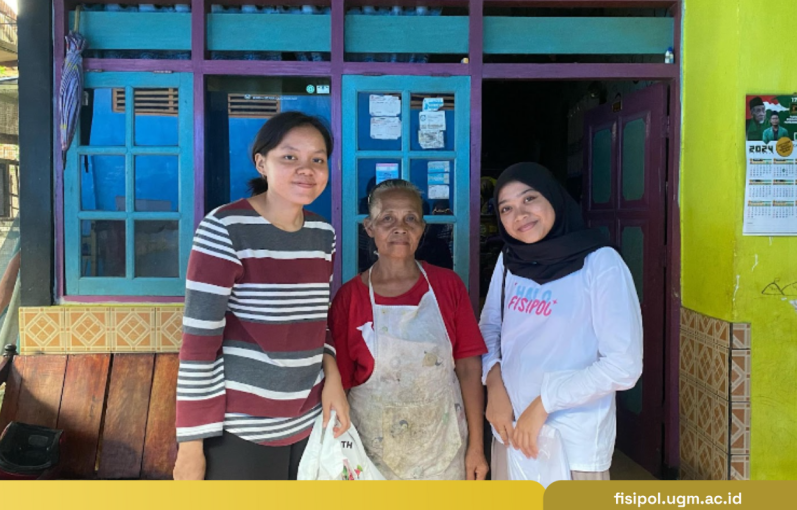
Yogyakarta, 18th of July 2024—The striking differences in celebration invitations styles between rural and urban communities reflects the cultural differences at play and shows how the culture adapts to the ever-more dynamic times. Celebration invitations in the rural communities, ranging from the khitanan, puputan, to wedding invitations are coupled with a strong tradition of punjungan and other traditional values. This is different from the urban communities, which emphasize efficiency and modernity in the tradition of punjungan in their wedding invitations.
Looking at these differences, five students from Universitas Gadjah Mada decided to do research in order to further examine the differences of cultural sensitivity between the rural and urban communities in interpreting punjungan (a gift-giving ceremony that is done in celebratory events). These five students are Galuh Lintang Larasati (Fisipol), Upik Maulia (Fisipol), Pinky Astri Astuti (Fisipol), Rehuella Sarlotha Modjo (FIB) and Lola Purnama Sari (FIB). The team, which was supervised by Pinurba Parama Pratiyudha, S.Sos., M.A., participated in the Student Creativity Week for Social Humanities Research (PKM-RSH). This event was funded by the Ministry of Education and Culture, Language and Technology this year.
The research, which was conducted since the 16th of May 2024, took place in the Purworejo Regency, specifically in the village of Dudukulon as the representative of the rural community. Meanwhile, they chose the village of Pangenjurutengah as the representative of the urban community. “The tradition of punjungan in Purworejo is still often practiced. For one, this location is right in the middle of two differing cultures, that is the Ngayogyakarta Hardiningrat dan Banyumasan. The variations of cultures makes the research interesting,” said Lintang.
Three months in the research, the researchers found a few differences in the tradition of punjungan practiced by the rural and urban communities here in Purworejo. In the rural areas, the tradition of punjungan still exists as it is supported by the strong solidarity of the local communities there. This solidarity among the people came in the form of rewang (helping each other out). “The punjungan tradition in the rural areas are usually prepared together through rewang and is coupled with Javanese customary principles and components,” stated Lintang.
In the tradition of punjungan in rural areas themselves, there are many supporting traditions that are still conserved. “Other than punjungan, marriage invitations are also coupled with other various local traditions, like the ngayu, nempur lor kidul, as well as rewang,” explained Pinky.
Upik also mentioned that punjungan and the other supporting traditions done by the rural community are done as a form of appreciation and gratitude. Upik then added that there is a belief in certain myths. “They (the rural community) practice punjungan and the other supporting traditions as a form of appreciation, and also as a way to free themselves from evil influences so that the celebration can be done without interruptions,” stated Upik.
With the urban areas however, the tradition of punjungan for wedding invitations are not strongly tied with customary traditions. The only supporting tradition for punjungan in the urban community is the tradition of selamatan. Other than that, punjungan is usually done through the catering system without any help or rewang from the neighbors. “The tradition of punjungan for wedding invitations is not accompanied by strong customary principles and it instead emphasizes practicality and efficiency,” said Pinky.
Lintang also said that the role of the surrounding community in urban areas is usually only during the distribution of punjungan to the closest neighbors. “Due to the availability of catering services, only the family and the nearest neighbors help with the preparation and distribution of punjungan,” described Lintang.
In the end, Lintang stated that there is a striking contrast of cultural adaptation of the culture of punjungan by the rural and urban communities. While both communities still regularly practice the tradition of punjungan, each of them have their own ways of adapting to the times. “Both of these communities are already in the modern era, it’s just that both communities have their own way of preserving their culture in order to adapt to the times,” concluded Lintang.
Further stories of this research journey can be found on the instagram account @pkmrsh.punjunganpwr.
